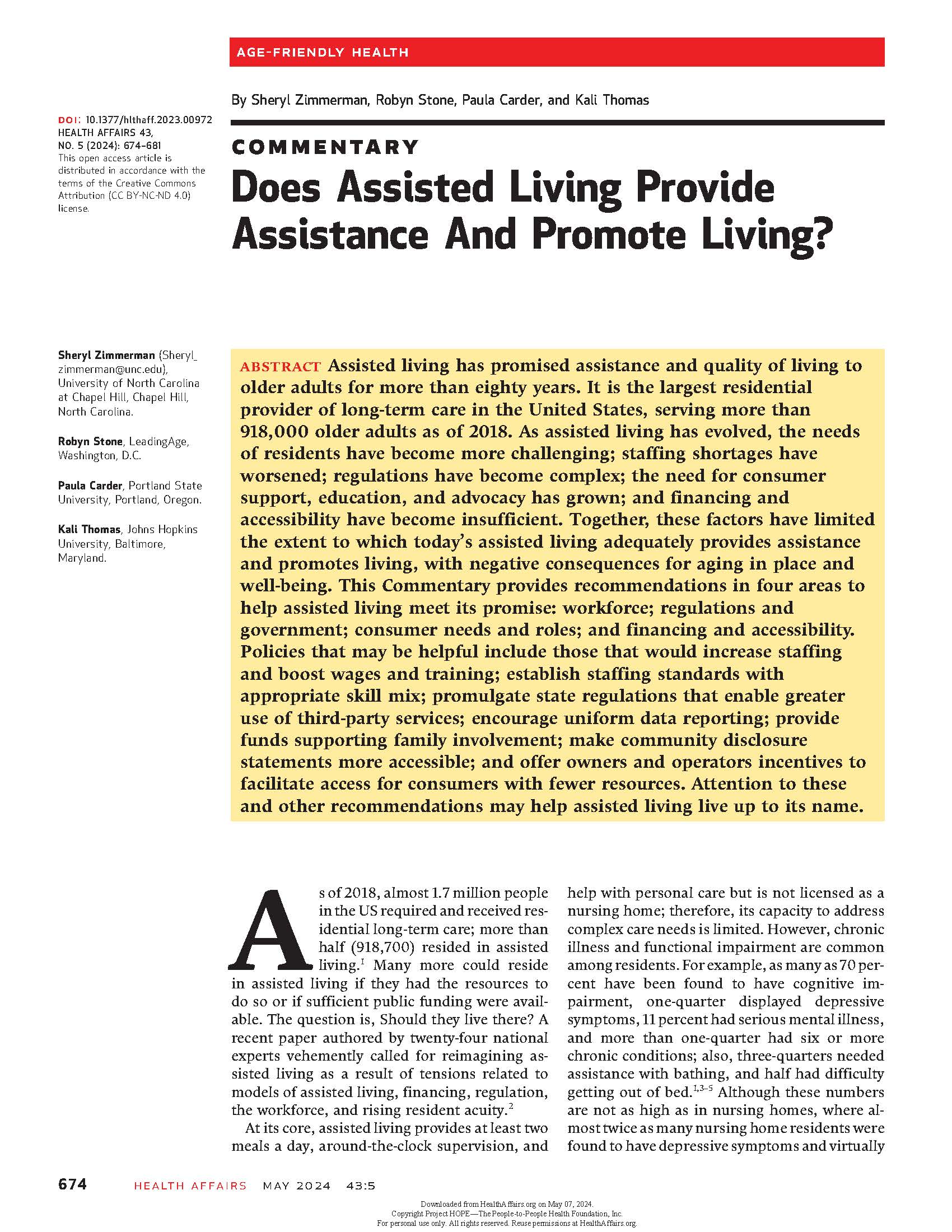WHAT THIS MEANS FOR YOU: Interviews were conducted with 38 older adults in rural villages and AL communities in the Netherlands to compare the effect of social frailty, measured by access to social resources and activities that fulfill social needs. Social frailty is the actual or potential loss of social resources and activities over time, leading to loneliness and isolation. Older adults who live independently in their own communities experienced self-reported loneliness, while those living in AL communities reported higher participation in social activities. Therefore, for some older adults, a residential setting may be preferable to aging in place to address loneliness and social frailty.
Ageing & Society
Interactions, Relationships and Belonging: Comparing Social Connectedness and Perceived Isolation among Older Women Living Alone in Private Homes and in Assisted Living
Interactions, Relationships and Belonging: Comparing Social Connectedness and Perceived Isolation among Older Women Living Alone in Private Homes and in Assisted Living
WHAT THIS MEANS FOR YOU: This qualitative study of social connections among 16 women aged 75 and older found that those living in the community focus on feeling connected to the world at large, while those in assisted living have more casual interactions and feel like they are a part of the community. Most women in both groups did not experience perceived isolation; they had adjusted their expectations about socializing to fit their living situation.
Engagement with life among the oldest-old in assisted living facilities: enriching activities and developmental adaptation to physical loss
Engagement with life among the oldest-old in assisted living facilities: enriching activities and developmental adaptation to physical loss
WHAT THIS MEANS FOR YOU: This study examined the activities, motivations, and barriers to activity engagement of 20 residents ages 80-94 residing in two AL communities. Resulting themes included a common longing for enriching activities among all residents; those with functional limitations found it harder to engage in such activities; and participants perceived the activities provided in their communities as being geared toward those with cognitive impairment. Thus, participants who were cognitively fit but had significant mobility impairments were in most need of engaging community activities.


